|
Funddaten:
18.07.2018, MTB 7221/4/2/3, Esslingen - Auchtweg 44, 341 ü. NN,
auf Blättern von Zucchini (Cucurbita pepo subsp. pepo convar. giromontiina), leg. & det. J. MARQUA.
Fundort:
Nutzgarten mit Beeten.
Verbreitung:
Unbekannt. Vermutlich der Erstnachweis für Baden-Württemberg. Sehr wahrscheinlich weit verbreitet und häufig, jedoch unbeachtet.
Beschreibung:
Befallsbild: Blattoberseits weißlicher Mycelfilz, der sich zuerst in einzelnen, vieleckigen Flecken zeigt, die später großflächige Beläge ausbilden. Chasmothezien keine vorhanden.
Der Befall kann auch auf Stängel und Früchte übergehen.
Konidien [95% 6 SAP v H2O(nat)]: 27,4-34,7-42,1 x 21-22,4-23,8 µm µm; Q = 1,2-1,6-1,9; Vm = 9132 µm³; breit ellipsoid, rel. dickwandig,
hyalin, glatt, mit deutlich sichtbaren Fibrinkörperchen. Konidien in längeren Ketten.
Systematische Einordnung:
| Reich: |
|
Fungi |
| Abteilung: |
|
Ascomycota |
| Klasse: |
|
Leotiomycetes |
| Ordnung: |
|
Erysiphales |
| Familie: |
|
Erysiphaceae |
| Gattung: |
|
Podosphaera |
Basionym:
Erysiphe xanthii Castagne
Synonyme:
Sphaerotheca xanthii (Castagne) L. Junell
Erysiphe fusca Fr.
Erysiphe doronici Duby
Erysiphe erigerontis-canadensis Lév.
Sphaerotheca phtheirospermi Henn. & Shirai
Sphaerotheca indica Patw.
Sphaerotheca codonopsis Z.Y. Zhao
Sphaerotheca caricae-papayae Tanda & U. Braun
Verwendung:
Unbekannt.
Literatur:
- BRANDENBURGER, W. (1985): Parasitische Pilze an Gefäßpflanzen in Europa. Gustav Fischer Verlag-Stuttgart-New York.
- ELLIS M. B. & J. P. ELLIS (1985) - Microfungi on Land Plants. An Identification Handbook. Croom Helm. London&Sydney.
- KLENKE, F., SCHOLLER, M. (2015): Pflanzenparasitische Kleinpilze. Bestimmungsbuch für Brand-, Rost-, Mehltau-, Flagellatenpilze und Wucherlingsverwandte in Deutschland, Österreich, der Schweiz und Südtirol. – Berlin, Heidelberg
(Jürgen Marqua)
|
|
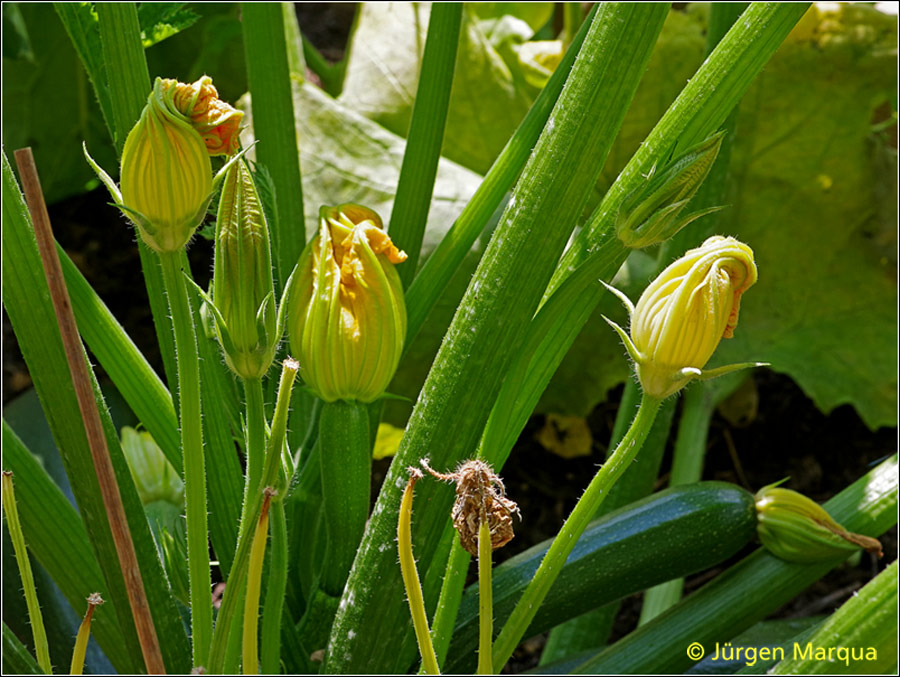 Wirtspflanze (JM2980)
Wirtspflanze (JM2980)
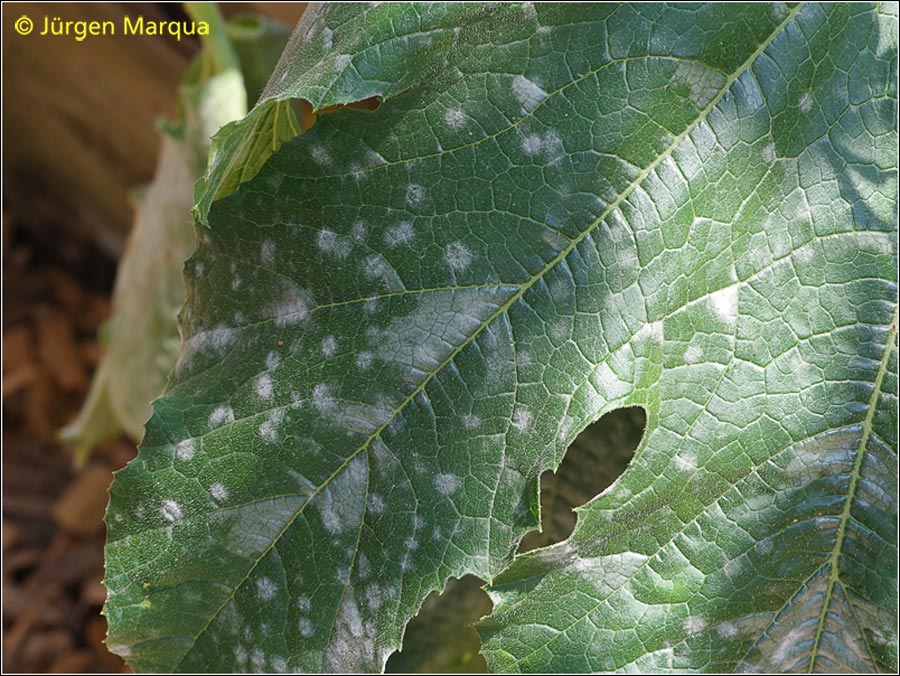 Befallsbild an Blatt (JM2980)
Befallsbild an Blatt (JM2980)
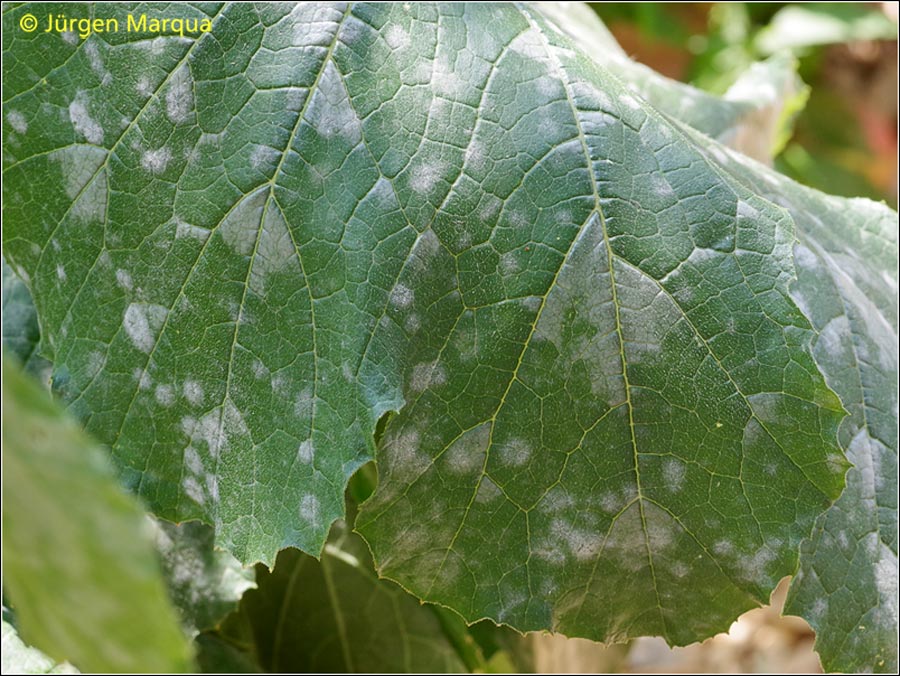 Vergr. Ansicht d. Befalles (JM2980)
Vergr. Ansicht d. Befalles (JM2980)
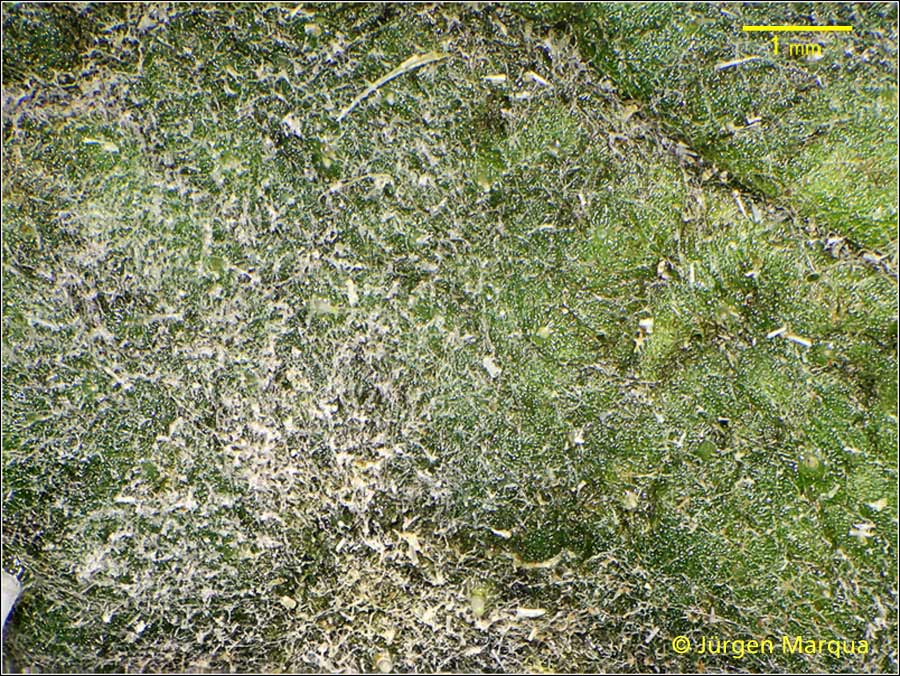 Detailansicht d. Befalles (JM2980)
Detailansicht d. Befalles (JM2980)
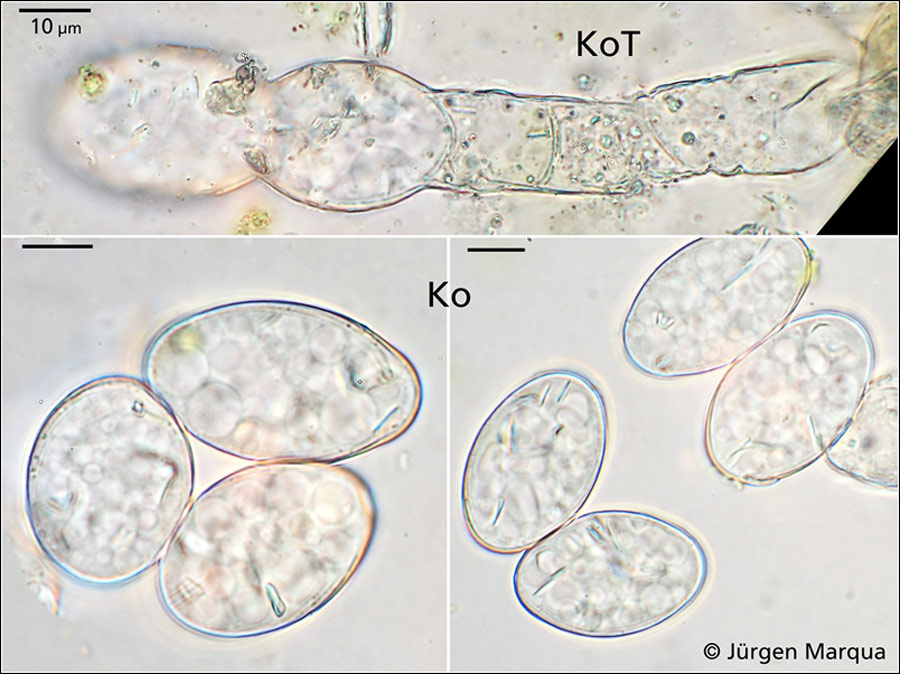 Tafel m. Mikromerkmalen (JM2980)
Tafel m. Mikromerkmalen (JM2980)
|

